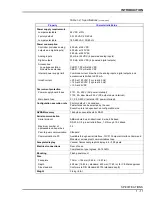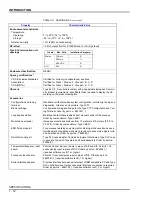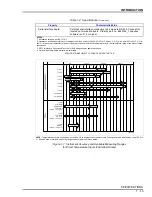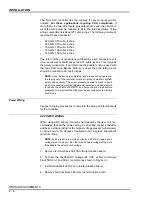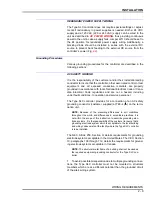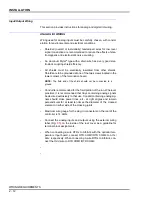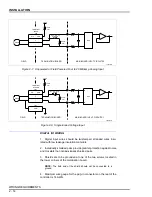
INSTALLATION
WIRING REQUIREMENTS
2 - 8
AC POWER WIRING
The unit is factory set for 120 VAC (nominal). Jumper W110 should be
connected to E3 (Fig.
) for 120 VAC service. If 220 or 240 VAC is
required, remove the power supply board and cut and remove jumper
wire W101 (Fig.
). It is recommended that the jumper wire be cut
such that it is completely removed from the circuit.
Either a standard three-prong grounded flexible CSA certified line
cord must be supplied by the user for power supply connection or the
AC supply must be hard wired.
1. If hard wiring the AC power supply, it is recommended that all
power wiring be stranded, copper conductor, No. 14 AWG, and bear a
suitable voltage rating for the highest voltage connected to the termi-
nation board (either signal or power) and a 75°C (167°F) minimum
rating. Wiring must be in accordance with the National Electrical
Code.
NOTE:
If AC power is used, the system should not be powered from
a transformer which also powers large motor loads (over
5 horsepower) or any other type of equipment which will generate
line voltage surges and sags.
2. Remove terminal block TB3 from the termination board.
3. Connect the specified line voltage (120, 220 or 240 VAC, 50 or 60
Hz) to terminal block TB3-1 (L1/H) on the termination board.
4. Connect the neutral conductor to terminal TB3-3 (L2/N).
5. Connect the ground wire to terminal TB3-2 ( ).
6. Install terminal block TB3 onto the termination board.
Refer to Figure
for AC wiring connections.
WARNING
Disconnect the AC line cord or power lines from the operating
branch circuit coming from the source before attempting elec-
trical connections. Instruments powered by AC line voltage
constitute a potential for personnel injury due to electric
shock.
AVERTISSEMENT
Débranchez le cordon d’alimentation ou les câbles d’alimenta-
tion reliés au circuit de distribution avant d’entreprendre des
connexions électriques. Les instruments alimentés en courant
alternatif comportent un risque de choc électriques pouvant
provoquer des blessures.




